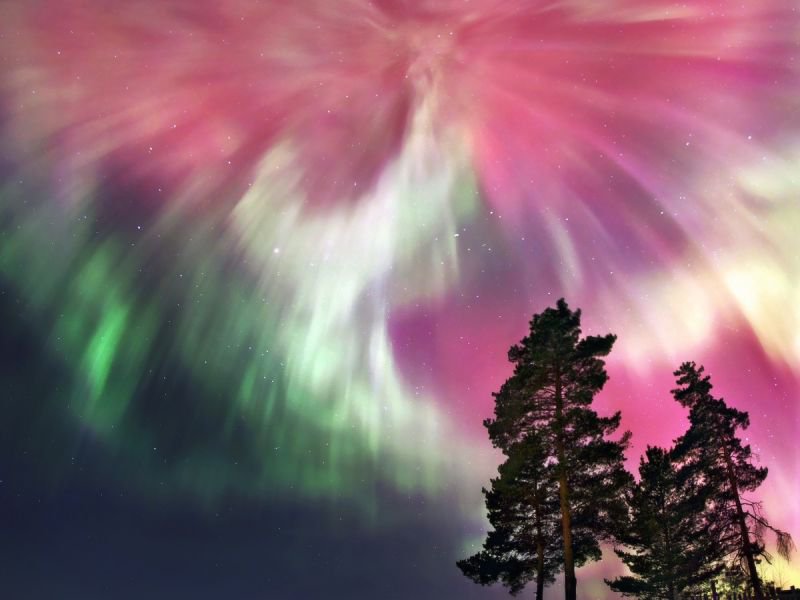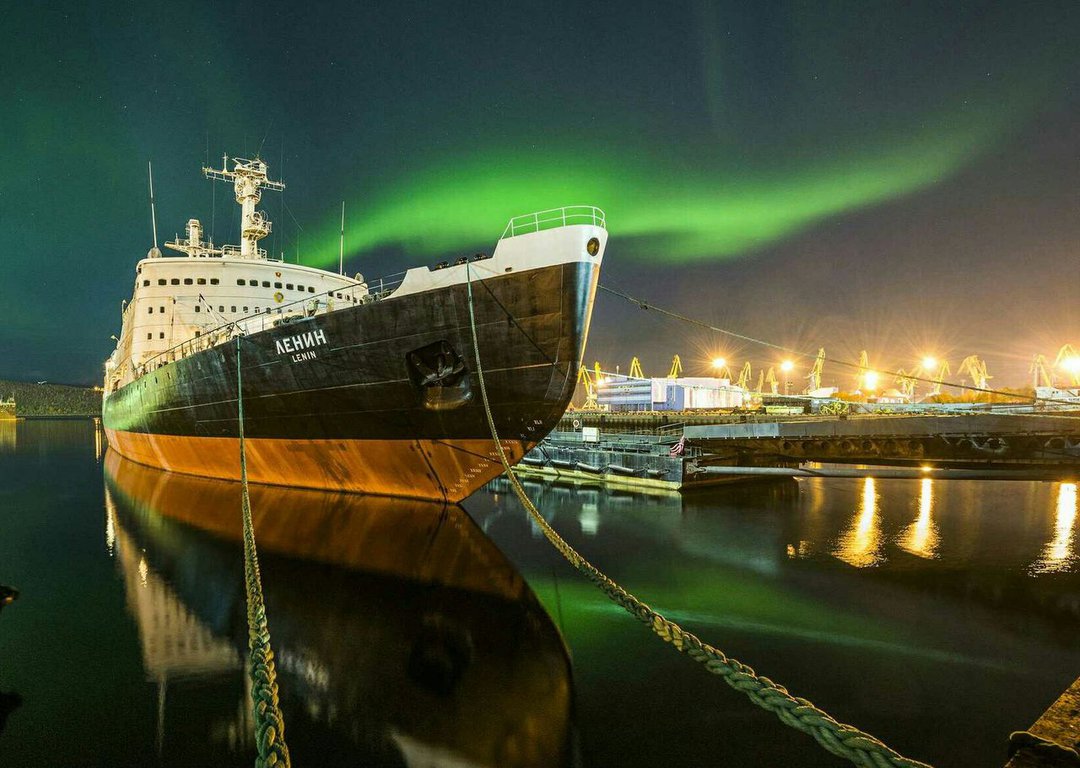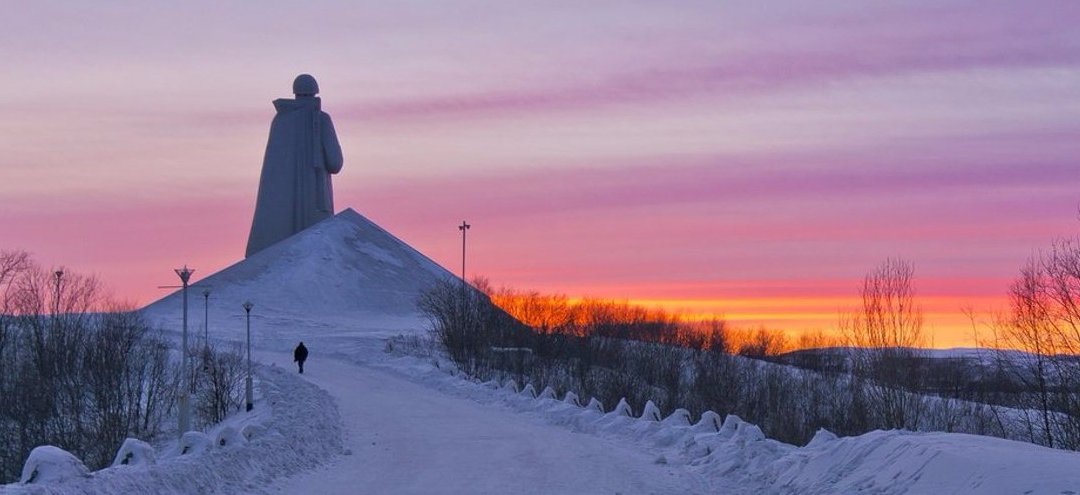 Northern lights in Murmansk
Northern lights in Murmansk➤Breakfast
➤Check out of the hotel
➤Transfer to the airport
➤Flight to Murmansk
➤Arrival in Murmansk
➤Meet & greet at the airport
➤Transfer to your hotel, luggage drop off and city tour
➤Lunch
➤Visit the museum of ice-breaker “Lenin”, the first nuclear ice-breaker in the world
 Lenin Icebreaker
Lenin Icebreaker
We will adjust a city tour timing to fit your flight schedule. For instance, it can be arranged on day 1 if you arrive daytime and depart first half of the day. Murmansk is the largest city in the world north of the Arctic Circle. Founded in 1915 as a supply port in World War I, it was a base for the British, French, and American expeditionary forces against the Bolsheviks in 1918. We shall visit either the Naval Museum or the Historical Museum.
If open, visit the museum of ice-breaker “Lenin”, the first nuclear ice-breaker in the world!
Murmansk played an important role as a Russian trade link with the Allies during the Second World War II. Various supplies were brought to the city with the help of the Arctic convoys. Murmansk was heavily damaged during the war. It was restored at the beginning of the 1950ies.
 Alyuosha Memorial
Alyuosha Memorial
On October 4, 1916, Romanov-on-Murman was laid on the shores of the Kola Bay, renamed Murmansk after the October Revolution. By the way, this was the last city founded in the Russian Empire.
"And on the left hand of the Kola town, they went to the sea to look, they live Murman, Syrech - Norman, they are also Varangians, who in ancient times came and sailed from the city of Varda and lived with us robbed, which memory remained in the word - thieves, thieves. The abbot disputed: they say that the Normans, therefore, live in the ground holes (“nora”) live like animals: the reason for this is cold. And I say: this is not Murmas who live in burrows, and it is not because of the cold, but the small people shovel from fear, no matter how much our industrialists live it. You will not bite a Murman with a blunt tooth. " - From the story of Levontius Pomorets. The impetus for the early development of the bay was the First World War. Trying to get access to the Arctic Ocean through the only non-freezing strait at that time, Russia in 1915 determined a site for the development of a seaport on the right bank of the Kola Bay of the Barents Sea. His task was to ensure the unhindered delivery of military cargo of the Entente during the blockade of the Baltic and the Black Sea exits. During WWI, Murmansk was the main port in European Russia
During WWII, the help of the allies was invaluable. Of great importance were the supplies of military equipment and ammunition, food and strategic materials that our defense industry needed. In March 1941, a law was passed in the United States that granted the president the authority to transfer, exchange, rent, a loan or otherwise supply military materials or military information to the government of any country if its "defense against aggression is vital to the defense of the United States." This system is called Lend-Lease.